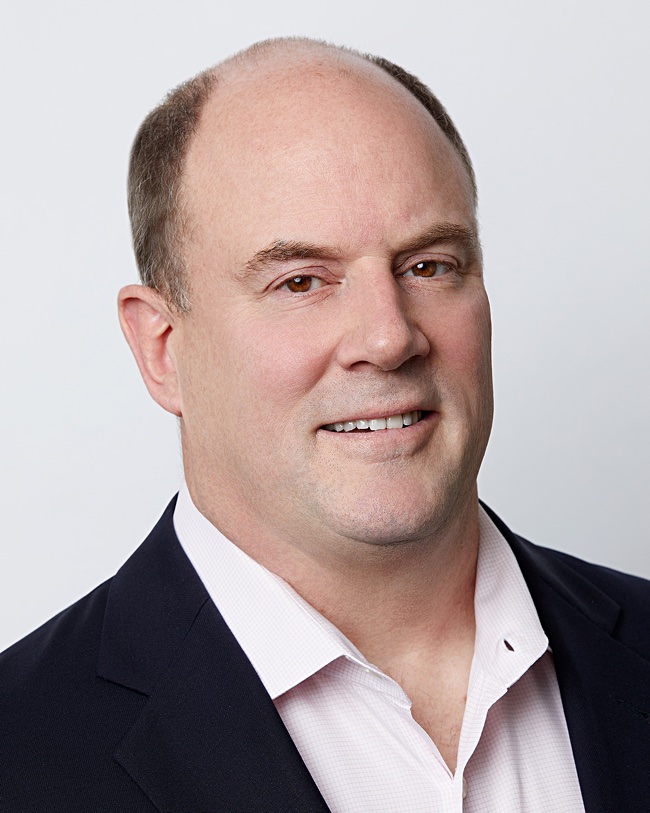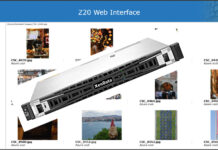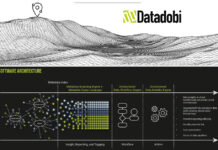Seagate’s disk drive slump is over with a revenue rise due to US cloud providers buying more mass-capacity drives, and more to come from enterprises.
Revenues jumped 49 percent to $2.17 billion in its first fiscal 2025 quarter, ended September 27, beating the rise last quarter, and above the midpoint of its guidance range. GAAP profits of $305 million contrasted with the $14 million loss a year ago. Shipped capacity climbed to 138 EB, up 54 percent on a year ago.

CEO Dave Mosley stated: “Seagate is off to an outstanding start to the fiscal year, highlighted by gross margin expanding to the highest level in more than a decade.”
But HAMR disk drives are still not shipping as generally available to customers. Mosley said: “We executed on our plans to aggressively ramp our 28 TB nearline drives and broaden the number of cloud customers entering qualification on HAMR-based Mozaic products. We are excited by the strong product momentum which positions us well to address customer demand while delivering profitable growth. Our confidence in Seagate’s future opportunities is reflected in the decision to raise the quarterly dividend.”
Seagate said its build-to-order manufacturing and price discipline had increased gross margin and profitability, with Mosley commenting: “Seagate is achieving significant profitability expansion in a favorable demand environment.”
Financial summary
- Gross margin: 32.9 percent vs 10.2 percent last year
- Operating cash flow: $95 million
- Free cash flow: $27 million
- EPS: $1.41 vs -$0.88 a year ago
- Dividend: $0.72/share, up 3 percent
- Cash & cash equivalents: $1.2 billion vs $1.4 billion last quarter
The earnings call revealed that there had been “the first meaningful uptick in nearline demand following a multi-quarter period of stability” among enterprise and OEM customers with “an improvement in traditional server demand, as well as higher storage content per unit.”

Seagate said: “HDDs comprise close to 90 percent of bytes stored in public cloud environments and we are confident that proportion will hold for the foreseeable future.”
HAMR’s inability to be a plug-in replacement for conventional PMR drives is reflected by the fact that Seagate’s latest and highest-capacity 28 TB PMR drive is selling well, with Mosley saying: “These drives have quickly catapulted to our second highest revenue product, and we are continuing to both ramp volume and broaden our customer base in the December quarter.”
There is qualification progress with HAMR, he said. “The qualification with our lead CSP customer is progressing well through what has been a very intensive and thorough testing process. The learnings that we have gained are already being leveraged into future customer qualifications and product generations. To that end, HAMR qualification drives are now in the hands of multiple global cloud and enterprise customers. Our expectation for shipment and revenue ramp timing across the broader customer base still points to mid-calendar 2025.”
HAMR disk qualifications are progressing, with Mosley saying Seagate has “a few customer quals already completed spanning the enterprise nearline, VIA , and mass market segments.”
He said a HAMR drive fault earlier this year slowed qualification down. “The failure mode that slowed us down as we ramp to high volume this spring and summer is behind us … Here we are another quarter later, we have more drives, more configurations, running more modes of tests, and we haven’t seen hide nor hair of the failure mode. So, we’re confident that it’s behind us.”
Hopefully second-generation HAMR, the 4-plus TB/platter drives, will have a much easier and shorter qualification period.
Wedbush analyst Matt Bryson told subscribers: “Management provided an upbeat update around HAMR, signaling the qualification with their lead CSP is on track to be concluded in the current quarter. We believe such a result would be a significant positive surprise as expectations (including ours) have already shifted to assume this qualification doesn’t occur until CY2025.”

Mosley hammered away at the flash-will-not-replace-HDD argument, saying: “Compared with NAND-based storage alternatives, our HDD solutions offer approximately six times lower cost per terabyte. And HDDs are roughly nine times more capital efficient, delivering the economies of scale necessary to support the anticipated surge in data demand.”
He was asked about losing market share to Western Digital by analyst Krish Sankar, who said: “Historically, you’re more in the mid-40s, but last few quarters, it’s kind of dipped down to 30 percent to high 30 percent range. Can you talk about the factors that are behind this low share?”
Mosley explained: “Yes, for market share, I said a number of times, market share is an outcome of running your play … We changed our play a year ago when we said we want this build-to-order. So, we said, I want predictability, a longer time horizon rather than we’re building a bunch and then hoping to push it into a channel and going for market share or something like that.
“I think when we were at the bottom of the demand cycle, market share doesn’t really matter. It’s more of the predictability of the cash that you’re generating and so on. As we get back into things … then we’ll clearly take more of that demand our way. And so, I think the market share will re-equilibrate.”
A Bryson comment is relevant here. He said: “If STX can ramp HAMR around mid-year (and then deliver 40TB+ Mozaic 4+ drives before year-end), the company would seem to be set to transition seamlessly from peak industry conditions into a substantial capacity leadership position vis a vis peers,” meaning Western Digital and Toshiba. That ought to send its market share significantly upwards.
Seagate thinks it can meet market HDD capacity demand without building new manufacturing plants. Mosley said: “We’ll expand exabyte capacity by transitioning to new products. And so, if you think about it, as I go from 20 terabytes-ish to 30 terabytes-ish to even 40 someday, we’ll be able to expand exabyte capacity without adding significant capacity from a drive heads or media perspective. We’ll just use it much more efficiently on an exabyte basis.”
This will help with its profitability, which should improve as PMR drive manufacturing gives way to HAMR production. CFO Gianluca Romano said: “On the cost side, [at] a similar level of volume; HAMR cost per terabyte is below the PMR cost per terabyte. So, for sure, there is an advantage on HAMR.”
Next quarter’s revenue outlook is for $2.3 billion in revenues, +/- $150 million, a 49 percent jump year-on-year. Mosley said: “We see the potential for significant revenue growth for fiscal 2025, inclusive of the seasonal demand fluctuation that is typical for the March quarter.”








